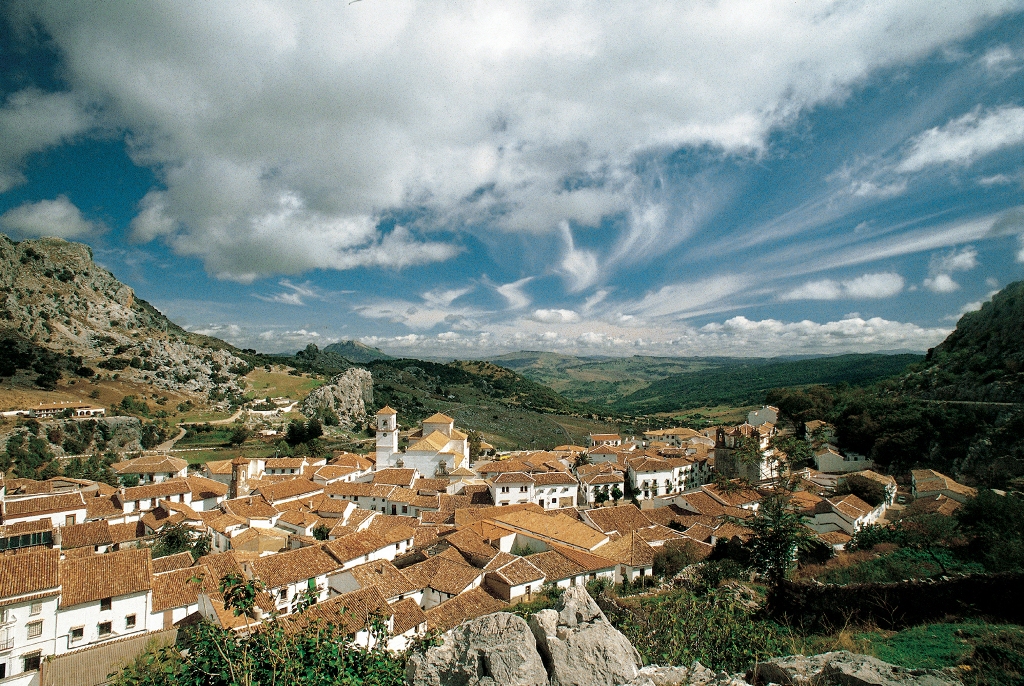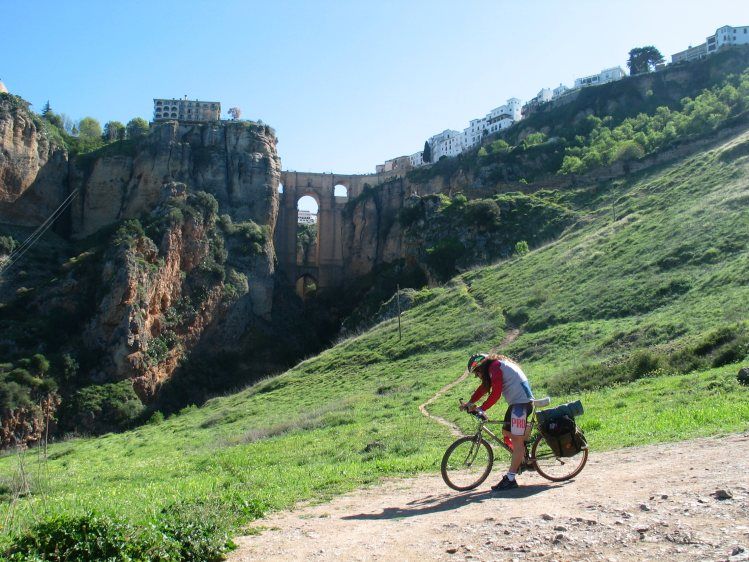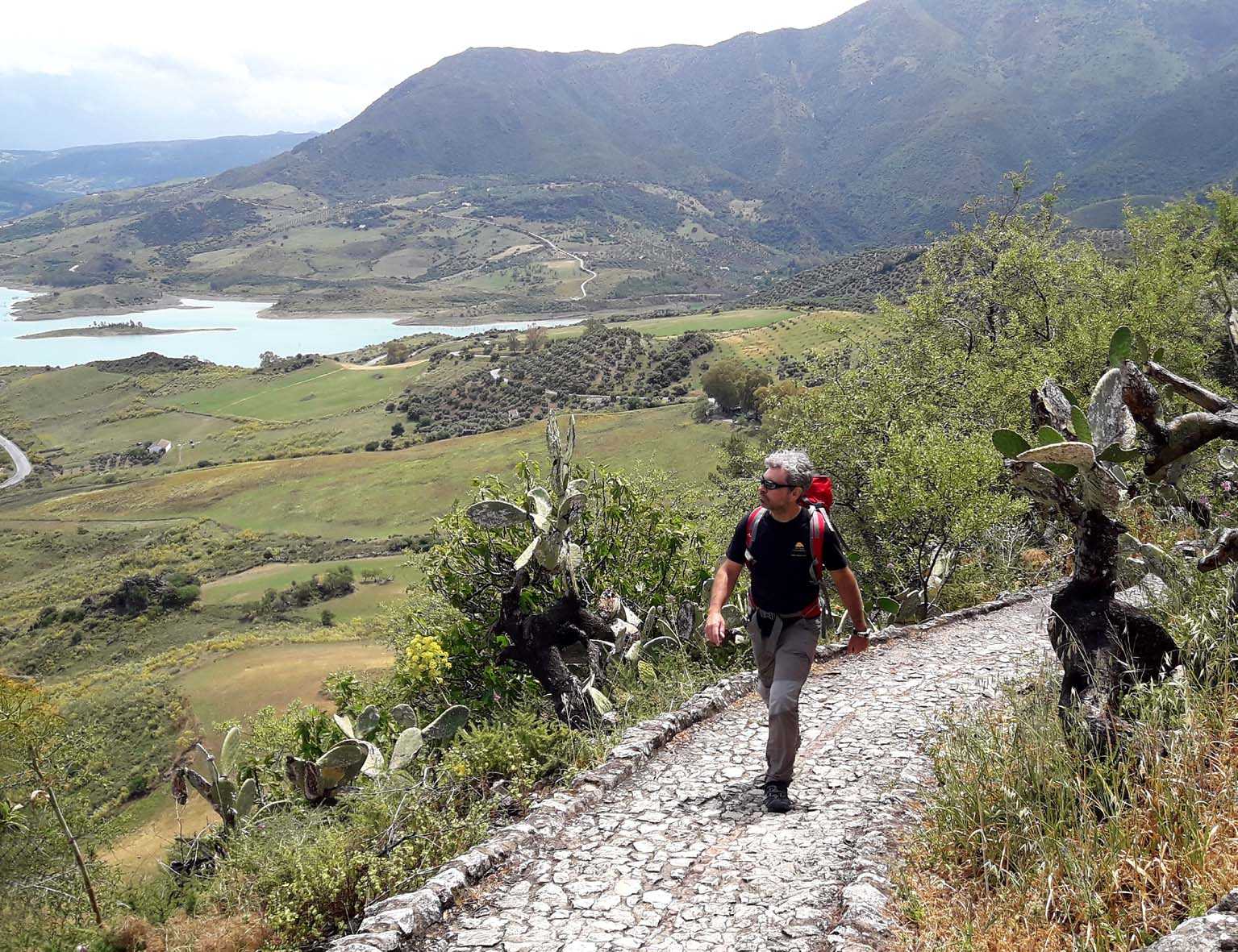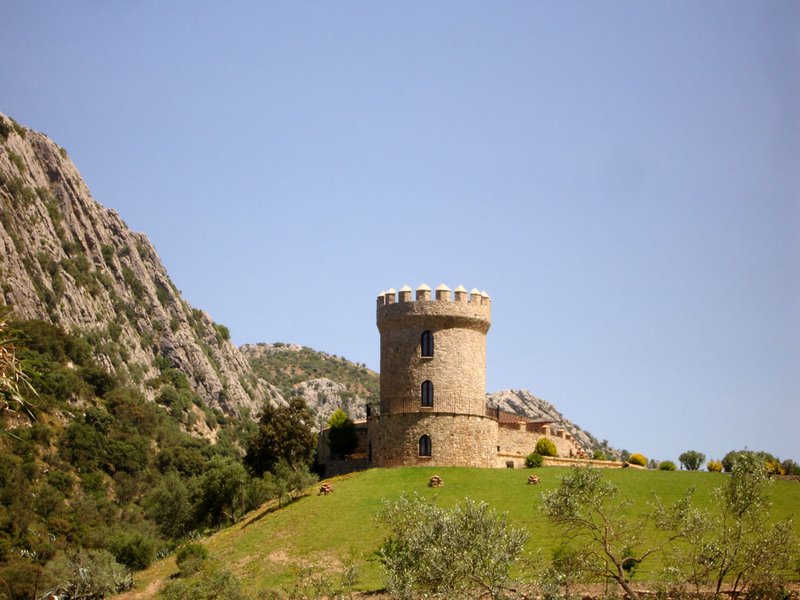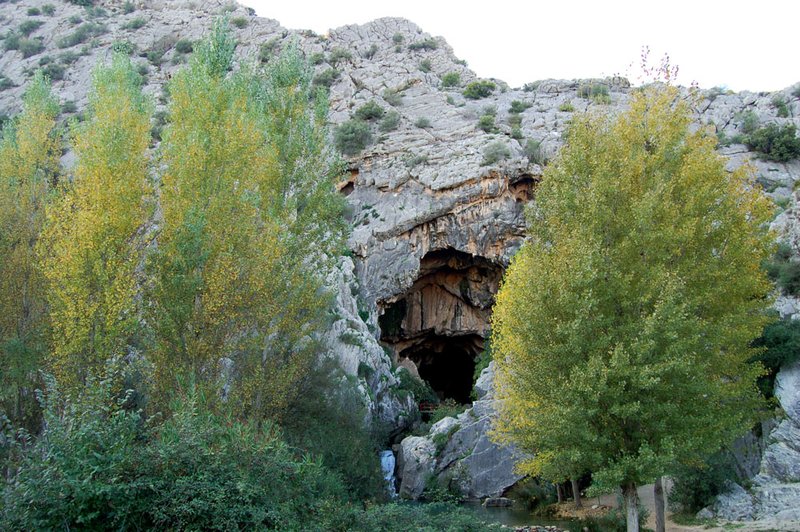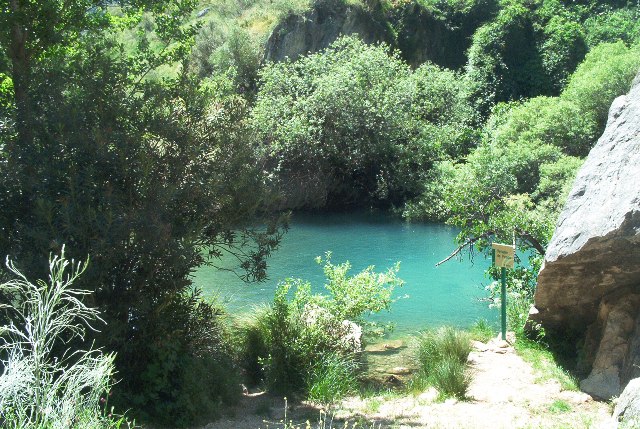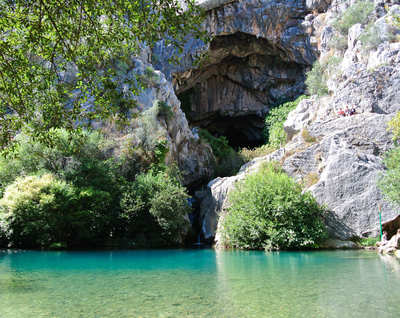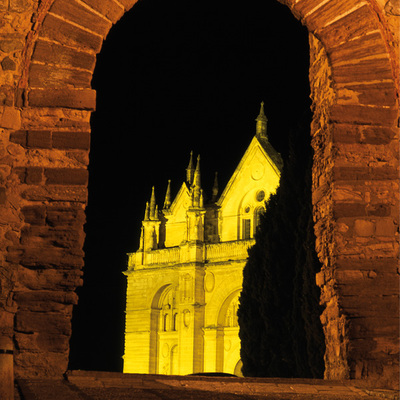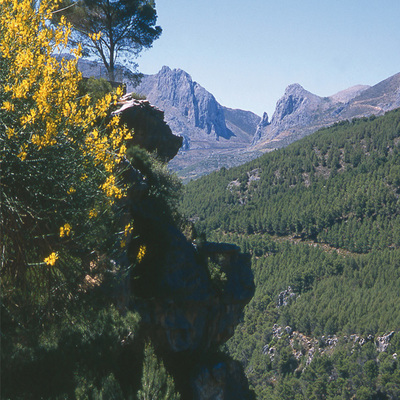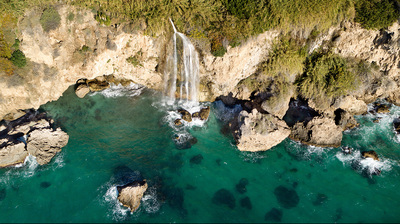Cueva del Gato
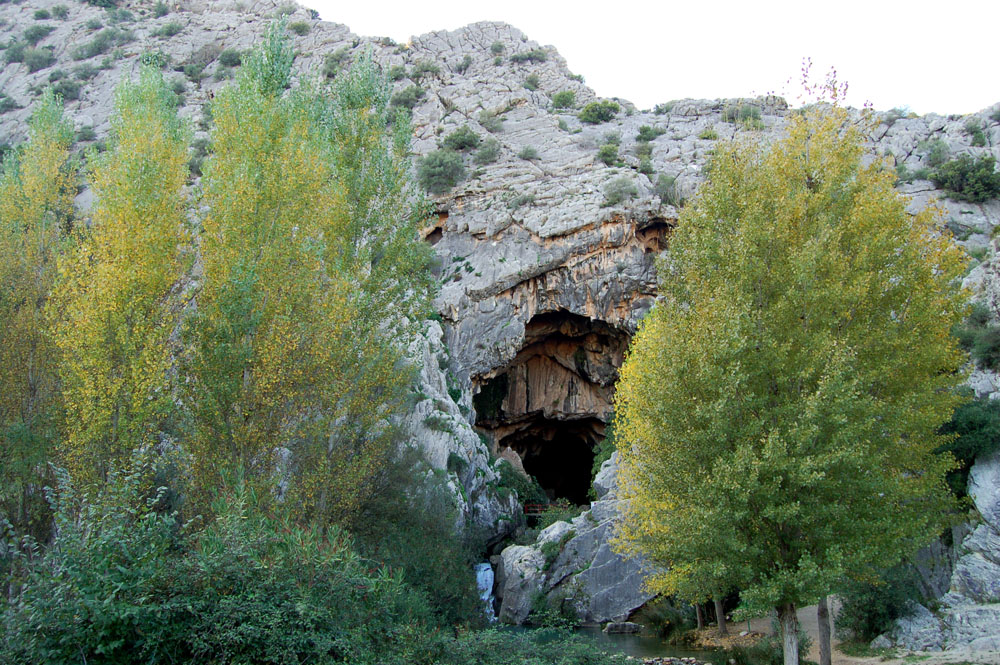
The Natural Monument Cuevas del Gato comprises the cave and the cavity from which the water of the Guadares or Gaduares River flows. Located in the town of Benaojána few kilometres from from Ronda and in the Nature Reserve of the Sierra de Grazalema Mountains, it has great scenic value, both for its natural and cultural components.
The spring has permanent crystal-clear waters, having passed through an underground section of over four kilometres, from its infiltration in the Garganta del Hundidero Gorge to its exit from the Cueva del Gato Cave. In fact, the cave is the southern entrance to a series of potholes called the Hundidero-Gato System, although all of the potholes in the area tend to be called by the same name, after its most famous mouth. From karst origin, it is the most important system in Andalusia, with chasms, lakes, siphons, canyons and rooms that reach up to 70 metres in height.
The confluence of the Guadares and Guadiaro rivers are very interesting, covered in typical riverbank vegetation in which many water birds can be seen, such as herons, cormorants, mallards, nightingales, etc. The cave also has one of the largest occupied colonies of cave bats, important cave paintings, at both the mouth and inside the cave, and cultural material from the the Neolithic period (cardial ceramics). This has made it a Cultural Heritage. Other bird related elements can also be seen, such as the Puente del Pontón (Bridge of Planks), the Molino de las Cuatro Paradas (Windmill with Four Stops) and the medieval road, an old Roman road.
The close relationship between this cave and the banditry work one of Romantic Andalusia should also be pointed out, which has drawn the attention of both scientists and travellers. Thus, it was named by English travellers during the second half of the 18th century.
Points of interest
Ideas for your trip
Services and infrastructure
Target audiences
Segments
Environmental units
Statement date
Area (m2)
You may be interested

